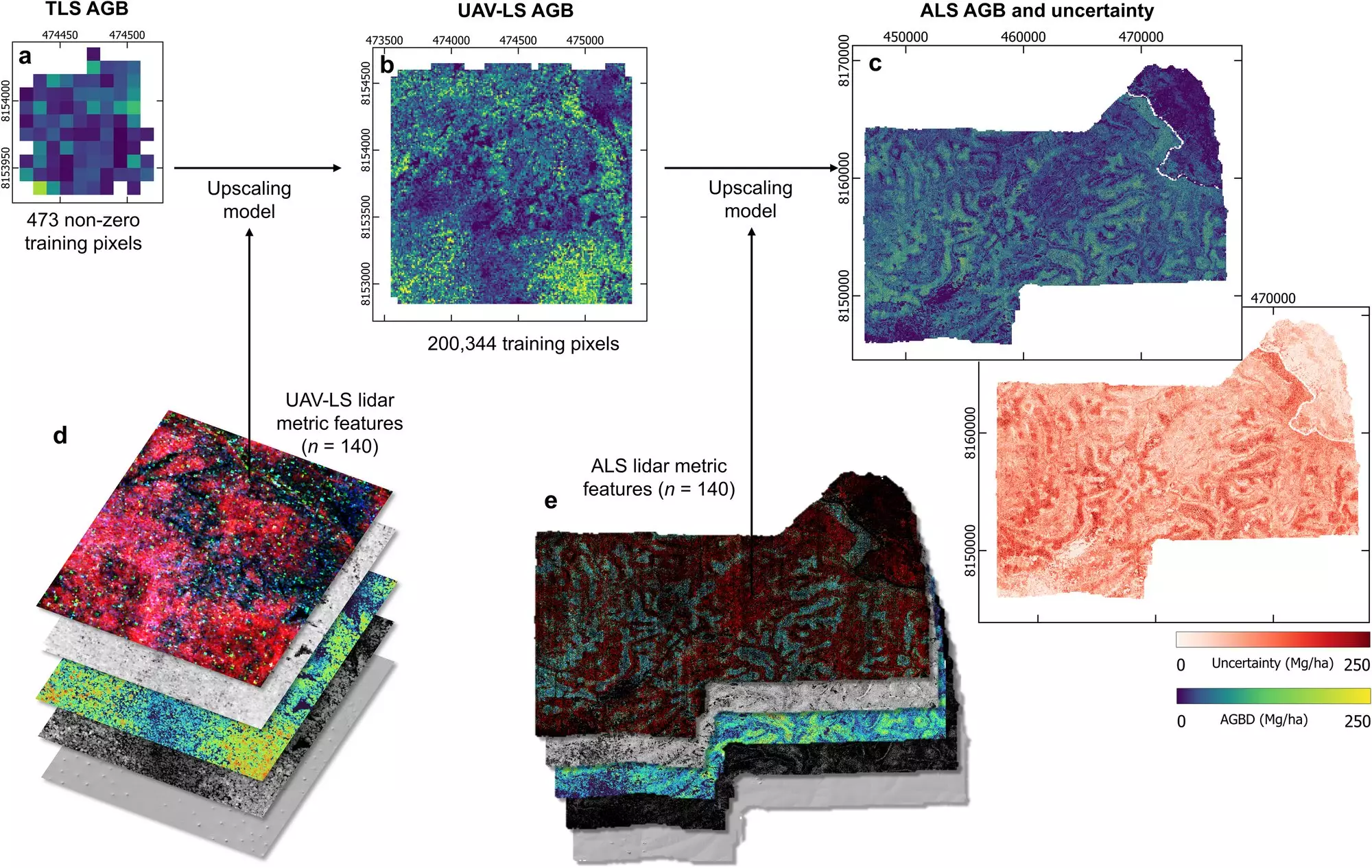Mozambique’s miombo woodlands, a vital ecological treasure in Sub-Saharan Africa, offer critical insights into nature’s role in carbon storage and the fight against climate change. Recent research led by an international team, including UCL experts and the carbon data provider Sylvera, reveals that these biomes may sequester 1.5 to 2.2 times more carbon than previously understood. This revelation has the potential to redefine environmental policy and conservation strategies, urging governments and stakeholders to prioritize the protection and restitution of these vital ecosystems.
The miombo woodlands, characterized by a rich tapestry of flora, fauna, and cultural idiosyncrasies, have been tragically diminished over recent decades due to deforestation. Satellite imagery shows a stark decline from 2.7 million square kilometers to just 1.9 million square kilometers over the past 40 years, emphasizing the urgency of protective measures. Scientists must robustly monitor these ecosystems; after all, the areas that have been stripped away equate to three times the size of the UK. The extensive research conducted in and around Gilé National Park underscores how imperative this task is.
Groundbreaking Research Methods Transforming Carbon Metrics
A cornerstone of this transformational study lies in the innovative research techniques employed. In 2022, the research team gathered a staggering 450 billion 3D measurements from over 8 million trees over a span of 500 square kilometers—an area that dwarfs Manhattan. By utilizing a combination of ground-based, drone, and helicopter laser scanning, they effectively painted a detailed picture of both intact and degraded woodlands.
Conventional allometric methods have often restricted carbon storage insights to basic parameters like tree height and stem diameter, meaning they overlooked the immense biomass of larger trees. This study leverages sophisticated technology to leap beyond those constraints, offering a definitive understanding of the role of biomass in carbon storage. Professor Mat Disney of UCL emphasizes the significance of this advancement, stating that the new metrics highlight the enhanced importance of miombo woodlands and the crucial need to protect them.
Impact on Climate Change Mitigation Strategies
The implications of this groundbreaking research extend far beyond academic discovery. The study estimates that Mozambique’s miombo woodlands could store approximately 13.6 billion metric tons of carbon dioxide equivalents beyond the traditional expectations. This shocking statistic suggests that the destruction of such ecosystems may have catastrophic results, releasing significantly more carbon than previously believed. The ramifications are clear: for climate policy to be effective, it must incorporate the newfound scope of carbon storage in these vital biomes.
The data generated from this study should serve as a wake-up call for governments, corporations, and financial institutions. Protecting and restoring the miombo woodlands must ascend the priority list, not only as an environmental necessity but as a promising investment opportunity. Financing initiatives that encourage forest restoration become increasingly attractive when they embrace verifiable values linked to carbon credits based on robust data.
The Intersection of Technology and Nature: A New Era for Carbon Measurement
This study marks a pivotal moment in how we approach environmental conservation and climate change mitigation. With advancements in laser scanning technology and multi-scale lidar integration, the research provides a comprehensive foundation for creating accurate carbon credit systems.
Dr. Laura Duncanson, a pivotal contributor from the University of Maryland, highlighted the importance of combining data from terrestrial sources with satellite information. The collaboration across various institutions emphasizes a unified approach to enhancing the NASA GEDI biomass products, which could help streamline environmental monitoring on a larger scale.
Sylvera’s commitment to quantitative accuracy not only facilitates investment in natural carbon sinks but also emboldens financial entities to support sustainable practices. By utilizing machine learning to calibrate these measurements and instantly ascertain the value of carbon sequestration projects, a clearer pathway toward genuine sustainability emerges.
A Call for Action: Prioritizing Forest Protection
The findings from this compelling research underscore the urgency for action: we must elevate the status of miombo woodlands and tackle the paradox of under-investment in ecological projects that promise significant carbon retrieval. As Allister Furey, CEO of Sylvera, poignantly notes, addressing climate change is fundamentally a financial issue. Navigating the complexities of ecosystem investments requires clarity, transparency, and innovative strategies that exceed previous expectations.
How we treat our natural environment today will shape the legacy we leave for future generations. The newly unveiled potential of Mozambique’s woodlands is not just an environmental issue; it’s a call to arms for stakeholders across sectors to unite efforts in conservation and restoration. The fate of these ecosystems hangs in the balance, and their protection could prove instrumental in humanity’s broader journey toward sustainable living.


Leave a Reply